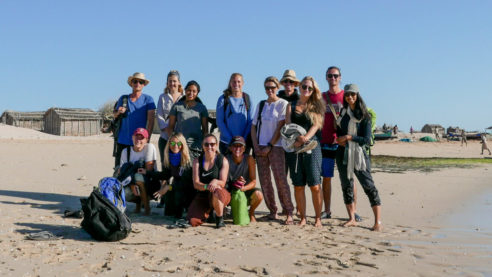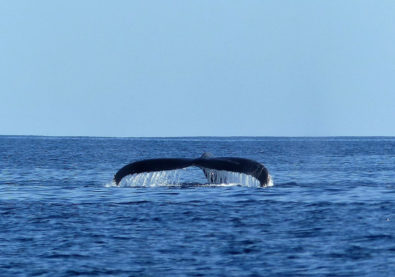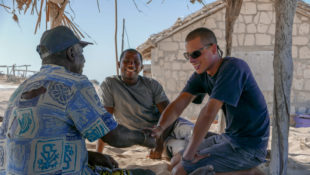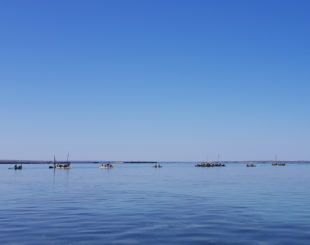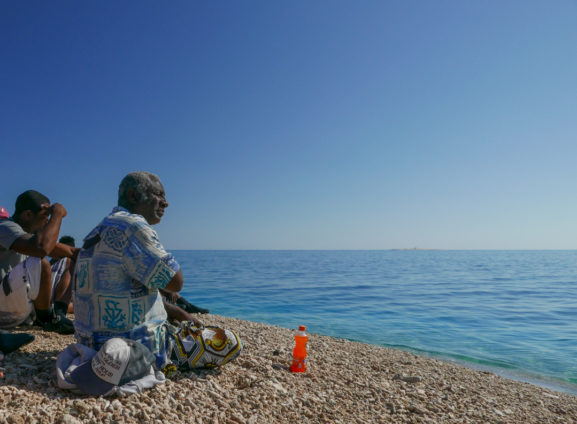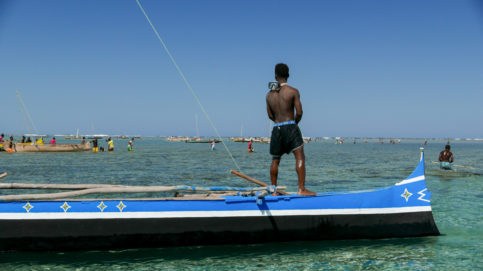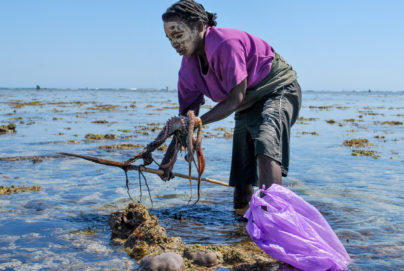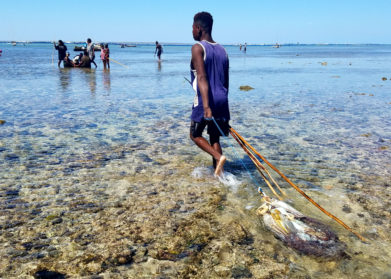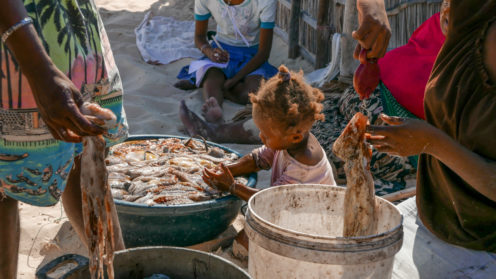Octopus fishing is the mainstay of small-scale fisheries in southwestern Madagascar, providing both subsistence and income for coastal communities. When fishers in the remote village of Andavadoaka reported a decline in octopus catches in 2004, Blue Ventures supported community members to establish a small temporary octopus fishing closure in the hope of boosting productivity. This resulted in a huge increase in octopus landings and fisher incomes, which encouraged neighbouring communities to adopt the approach. This temporary closure model has since been replicated more than 300 times in Madagascar and beyond.
Octopus are exceedingly difficult to find. Their talent in camouflaging allows them to mimic their surrounding habitat, a strategy only exacerbated by their preference for hiding under rocks and within crevices. With this in mind, I was intrigued to see how Malagasy fishers caught these elusive creatures with enough regularity to make it a successful fishery and reliable source of income. My underlying interest in artisanal fisheries added to my already great excitement at being given the opportunity to get involved in the seasonal opening of the temporarily closed octopus fisheries within the Velondriake locally managed marine area.
The closure period provides an important window of opportunity for octopus (a species with an extremely rapid growth rate) to increase significantly in weight.
Blue Ventures field staff informed us that this was a special and much anticipated occasion, and I was looking forward to witnessing first-hand the potential rewards that the villagers would reap this year as a result of the temporary closure management strategy. The temporary halt on octopus fishing in specific areas of the reef flat during the closure period provides an important window of opportunity for octopus (a species with an extremely rapid growth rate) to increase significantly in weight, and also protects brooding females whilst they are guarding their eggs. Furthermore, it reduces the overfishing of small, juvenile octopus, improving the long-term sustainability of the fishery.
From start to finish, it was clear that this occasion was a collaborative, culturally rich family affair. The day began bright and early, we set off from Andavadoaka just as the sun was rising and made our way towards the island of Nosy Ve. En route we were lucky enough to catch a sighting of a humpback whale on the horizon splashing around at the surface and spraying water in the air. With spirits high we hopped off our boats at a small, perfectly formed coral island on the boundary of the closure site.
As I glanced back towards the mainland, both from the north and the south pirogues loaded with fishing families were making their way towards the fishing grounds in preparation for the opening. The boats were filled with family members of all ages. Excited children, adolescents, mothers, fathers and elders of the nearby communities, all with spears and lines at the ready.
Once all the pirogues had made it to the shallows around the island’s shore the President of Nosy Ve began the Fomba, a ceremony to open the fishing grounds. He sat cross-legged by the water’s edge with a bottle of rum and Fanta, and Coca-Cola to offer to the ancestors in return for their blessing. All of the volunteers, including myself, sat silently behind the President whilst he started the official proceedings with a few words. This was followed by a toast and sip of rum for all who were willing at 9.30am… Fanta for those who were not yet ready for stiff liquor! The cup was passed around, the Coca-Cola was thrown into the sea, and with this the ceremony was complete.
As we sat amongst the fishing families we were able to enjoy the community atmosphere as the anticipation continued to build. The mood was positive and joyful with Malagasy families joking, jibing and making light-hearted exchanges across the water. After a short while, a young fisher climbed the mast of the pirogue where the opening flag was tied. After a swift ascent, the flag was released and everyone began to climb out of their vessels and move into the shallows. The official signal had been given, octopus fishing for the season had now begun!
Within a matter of minutes octopus materialised on the ends of the skilled fishers’ traditional voloso spears. I watched the whole process with fascination as I waded around the shallows. Once an octopus had been found, usually in a hole in the reef flat, the fisher would use their spear to lure the octopus, tempting them to latch on with their long tentacles so that they can be pulled out. Within less than an hour, fishing lines were threaded with multiple octopuses as men, women and children slowly and persistently sought out and caught them.
As far as the eye could see fishing families from many different villages harmoniously worked alongside each other to harvest this valuable communal resource.
The atmosphere during the fishing was both calmer and more relaxed than I had anticipated. After a 2 month closure one would fear that the opening day held the potential to become a frenzied and competitive affair. This most certainly was not the case. Despite octopus being a lucrative and important source of income for these families, the opening event was neither stressful nor tense. As a spectator from the outside, this positive atmosphere amazed me. I was particularly struck by the fact that the opening genuinely felt like a collaborative, cross-community and inter-generational occasion. As far as the eye could see fishing families from many different villages harmoniously worked alongside each other to harvest this valuable communal resource.
We were fortunate enough to experience the entire occasion, from the Fomba right through to the more hands-on and grimy part of the process, assisting the people of Nosy Ve to weigh and sex their monumental catch (911kg of octopus!). The data collectors calculated that the 290 fishers at Nosy Ve on opening day caught on 3.2kg of octopus, compared to the standard average of 2kg.
It was clear to me whilst participating in this opening that there is genuine support and respect for this management strategy amongst the communities who are implementing it. The management approach empowers these communities to take control of the closures and the sustainability of this vital resource, and enables them to realise short-term economic gains alongside maintaining the longer-term preservation of octopus for future generations.
I thoroughly enjoyed getting totally immersed and stuck in to everything. As a geography student, I have spent many years reading and learning about environmental governance, and this experience offered a unique opportunity to witness successful community-based management in action.
Join a marine conservation expedition in Madagascar.
Hear from another Madagascar volunteer.


